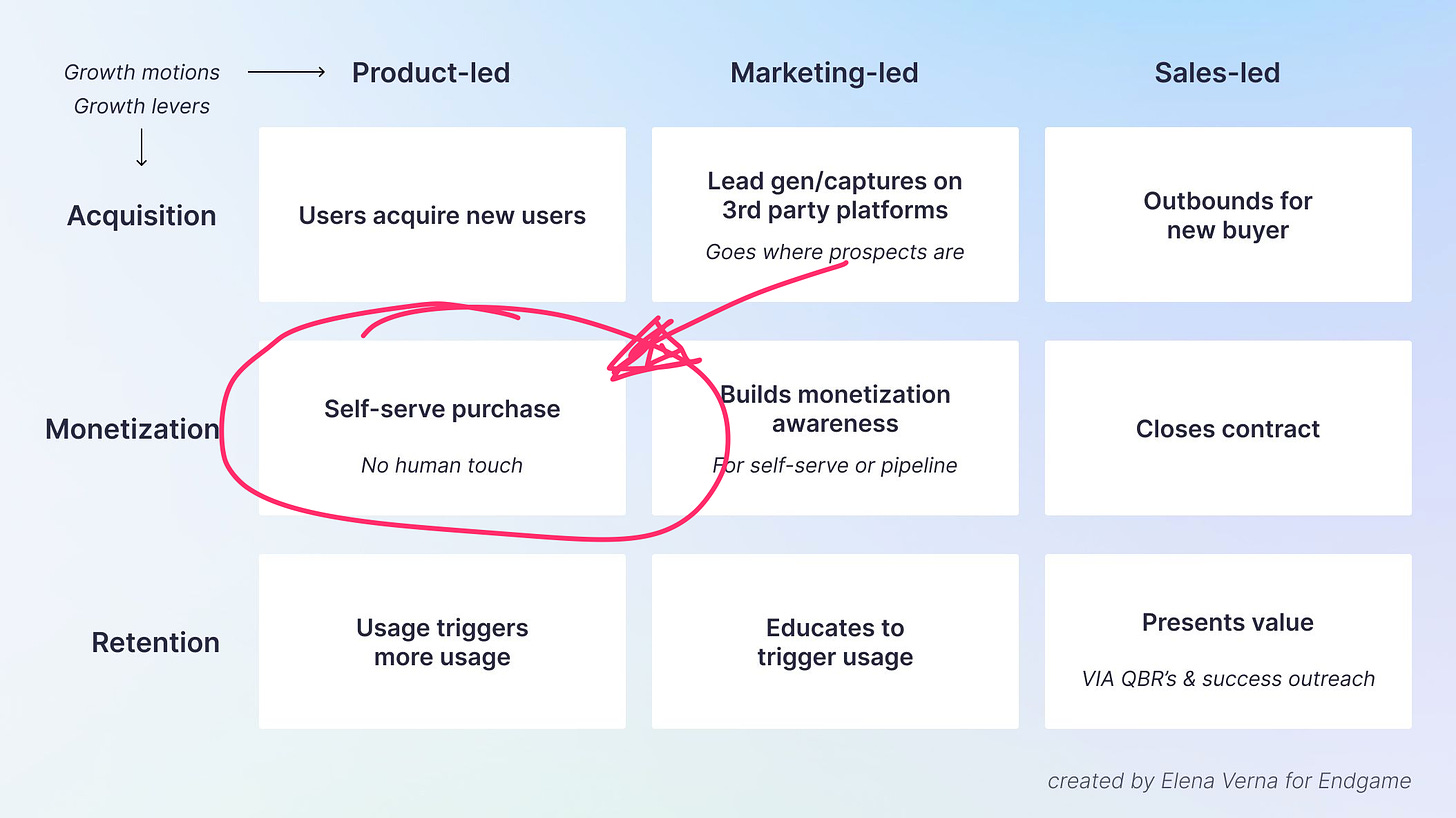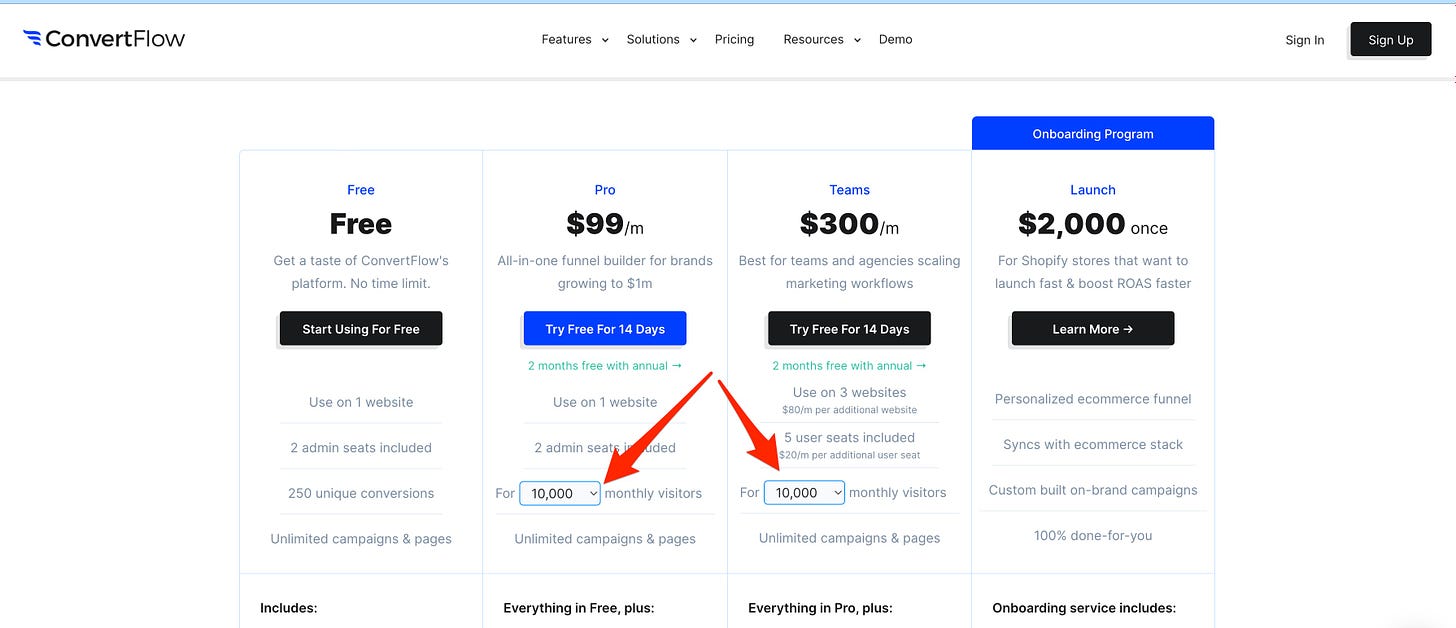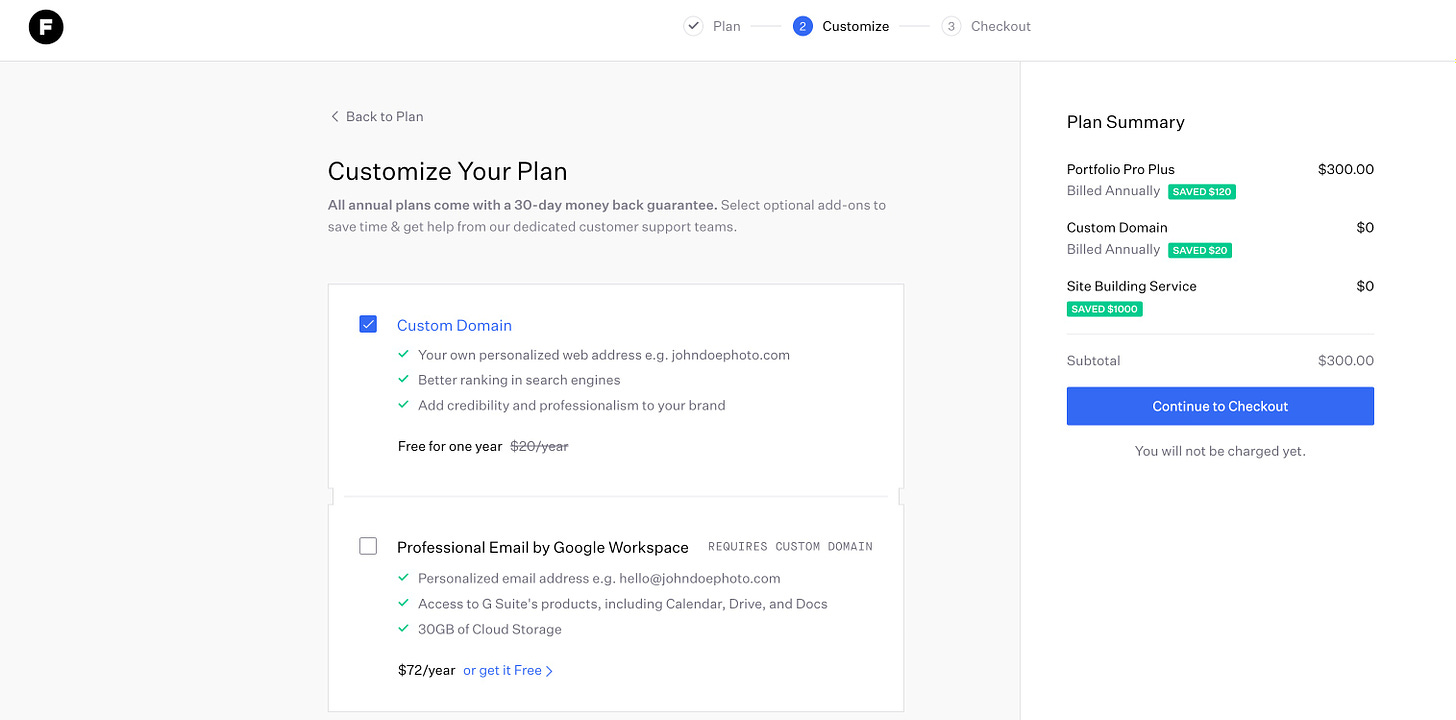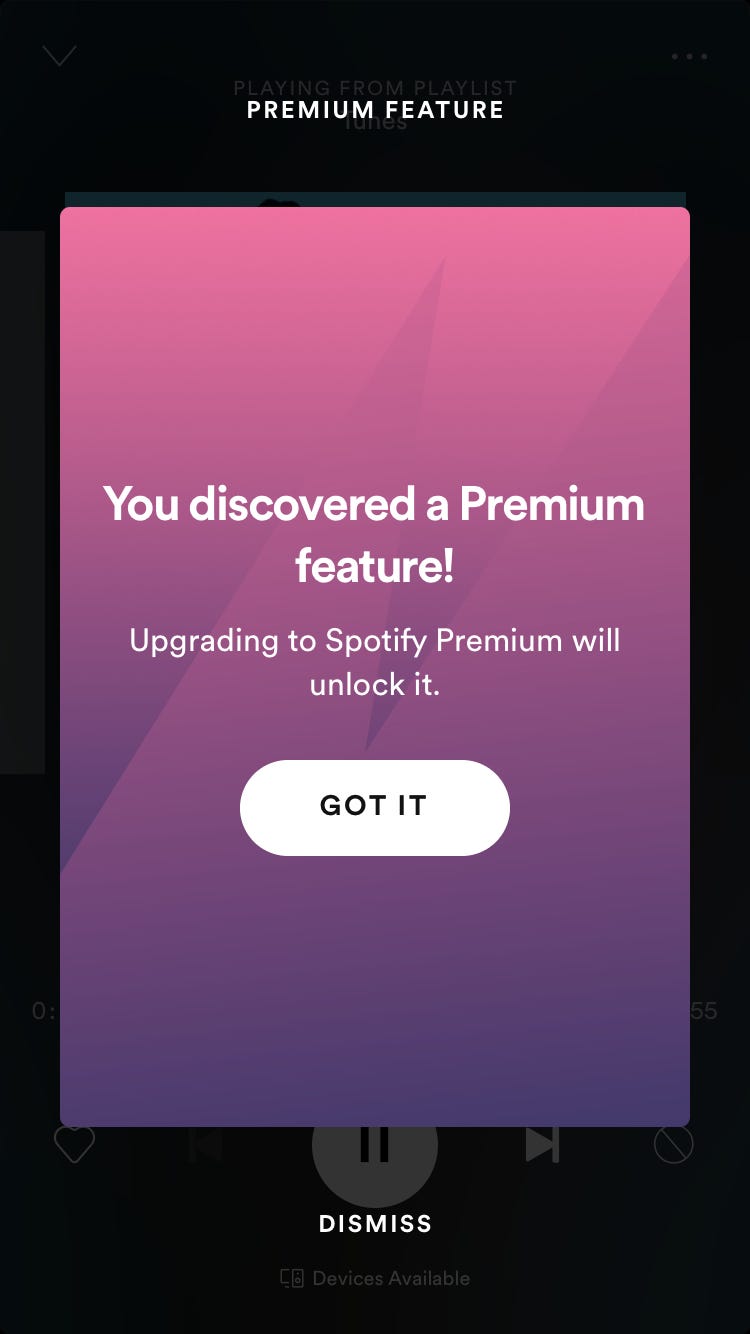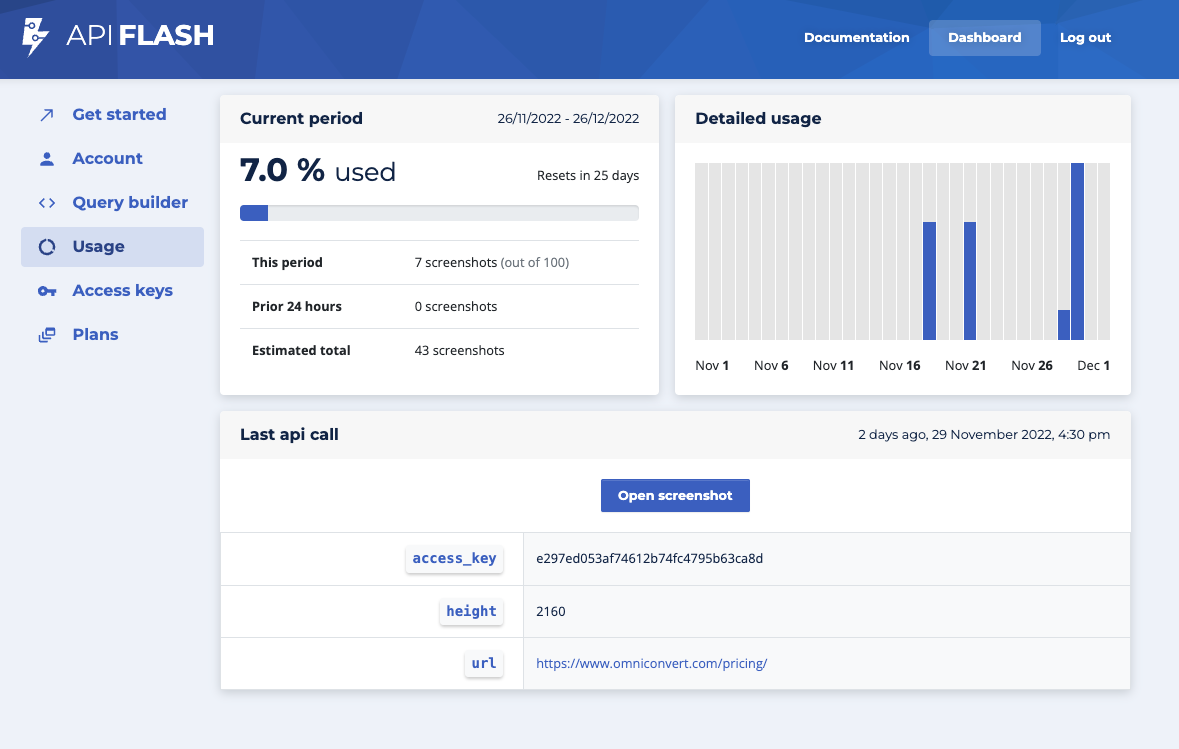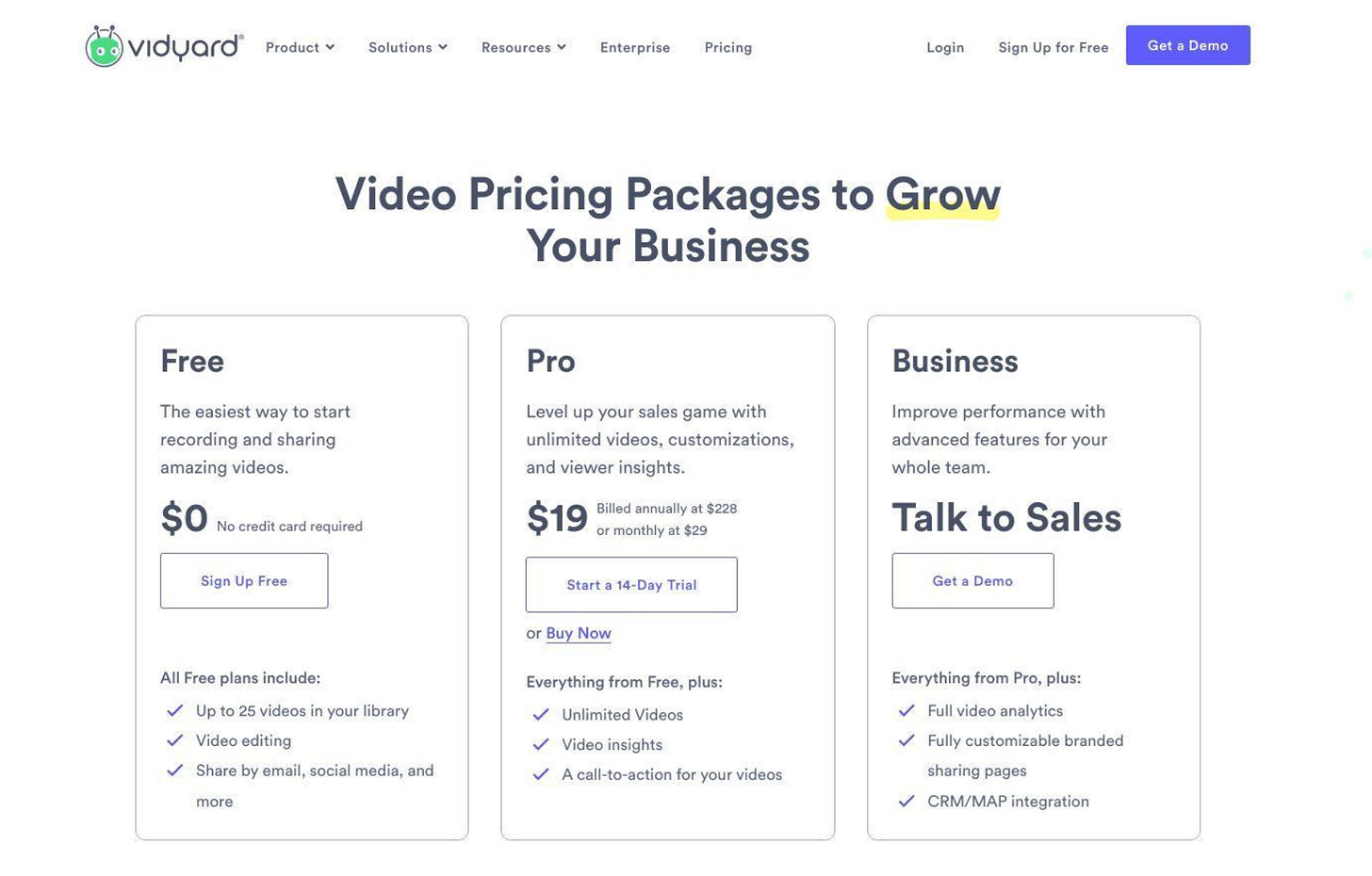In-Depth Guide to PLG Monetization
Methodologies and examples for optimizing your PLG SaaS monetization
What the heck is PLG Monetization?
In SaaS, you can acquire, monetize or retain customers by leveraging your sales team, marketing or your product (or a combination of the three).
PLG (or product led growth) is one of the three motions (sales and marketing being the other two) and monetization is the process of converting product value to revenue.
Elena Verna, has done an excellent job laying it out in a matrix, where she breaks down the responsibility of each:
To expand on this, the scope of PLG Monetization includes:
Pricing pages
Checkout flows
Plans and prices (i.e. pricing & packaging)
Paywalls and upgrade flows
Freemium and Free Trial flows
Reverse Trials flows
In a nutshell, PLG Monetization is anything in the self-serve product experience that helps in converting a free user to a paid customer or gets them to spend more by increasing their product usage.
PLG Monetization is anything in the self-serve product experience that helps in converting a free user to a paid customer or gets them to spend more by increasing their product usage.
Pricing Pages
Pricing pages live on the marketing site and they serve two main purposes in PLG:
Get website visitor to try the product for free
Get free user to convert to a paid user
Pricing Page Example - Octane AI:
Take a look at the pricing page below. If you are trying to decide if you should start a trial, it communicates:
Product features you can expect (Quiz, Opt-ins, etc..)
Price points (i.e. is this in my budget?)
Target persona with revenue brackets (i.e. is this for me?)
Social proof (i.e. can I trust / rely on this vendor?)
It then wraps it up with a clear CTA - Start free trial
Pricing Page Example - ConvertFlow
ConvertFlow prices their product per number of monthly visitors. For customers, who have been in trial, this is a tool to estimate their monthly costs and help them make a decision if they should subscribe.
Tips:
Pricing pages are a great place to run a/b experiments. They typically have a fairly large amount of web traffic, so you test different CTAs, copy, layouts, etc., to optimize for conversions.
Checkout flow
Checkout is the very bottom of your acquisition funnel. This is where the rubber hits the road. This is where the lead that you worked so hard to acquire and experience your product is ready to convert.
The purpose of the checkout is to:
Move user as smoothly as possible from hitting Upgrade to payment collected
Up-selling and cross-selling higher tiers or additional products (i.e. maximize ARPU)
Checkout Flow Example - Format
Format, a website builder for creatives. It offers a 14 day trial. To get into the checkout flow (at any time during the trial), there are multiple CTAs to active the checkout flow.
Once you are in the checkout flow, they present users with options to purchase domains and other add-ons. Notice the clear Plan Summary details on the right.
Everything is clearly laid out to ensure the user has no reason to abandon the cart.
Tips:
Consider adding social proof in the checkout flow
Consider what happens when trial expires and how to user into the flow then
Consider deep linking support, so that you can run email campaigns to bring them right into checkout
Consider support for discount codes in the checkout - but make sure they do not disrupt the flow (you don’t want users to abandon the cart just to Google for a discount code for you product)
Plans and Prices (i.e. pricing & packaging)
Ultimately, product monetization is built on top of your pricing and packaging.
The purpose of pricing and packaging is to:
Ensure that plans have the features that buyers want (according to customer segmentation)
Enable up-sell and expansion opportunities
Priced such that customers convert easily, but you don’t leave money on the table
The most common pricing structure in SaaS is what’s called good-better-best, where you typically see 3 tiers of plans, starting with lowest to highest price.
This does not have to be the case though. In fact many companies are moving to usage based pricing, where pricing is tied to some usage metric (e.g. per GB or per minute).
To get an idea of different pricing structures, checkout Top 10 Pricing Metrics.
Tips:
Consider monthly vs. annual plans and associated discounts. Annual plans tends to be better for retention, but monthly plans convert better.
Invest in good subscription infrastructure so you can experiment with pricing easily
Paywalls and upgrade flows
Feature monetization is a great way to drive additional revenue. The principal is pretty straight forward - any paid feature user has no access to on their current plan is an upsell opportunity.
Paywalls and upgrade flows work together:
The purpose of paywalls is to make timely and contextual prompts to upgrade
The purpose of upgrade flows is similar to the checkout flow - smoothly move the user along from upgrade to upgrade completed
Paywall Example - Spotify
Notice the copy on this screen - it implies user was clearly trying to engage with this feature before getting the prompt (i.e. make it timely and contextual).
Tips
Paywalls are your sales opportunity - consider using images, video, social proof or any other form of media to help you convey the value of this new feature
Leverage payment method on file, to make the upgrade as smooth as possible (i.e. user should not have to re-enter their billing and credit card information)
Instead of showing full price, consider showing them the difference in price - for example, if someone is on a $12 and the new plan is $18, consider saying “for an extra $6 you get….”
Freemium and Free Trial flows
By definition, a PLG company allows users to try the product before buying. There are two ways to do this - either by offering the user a free trial or a free plan (or both - more on this in the next section).
The main goals for these flows are:
To get user to see product value as quickly as possible and develop usage habits
To get users to hit some limit to prompt them to upgrade to paid
The main difference between freemium and free trial is that trials have a time based on usage based limit, therefore it will force the user to make a decision at the end of the trial.
Freemium Example - API Flash
API Flash lets developers capture screenshots of sites using their API. The freemium tier has 100 screenshot limit per month. It resets each month.
They do a great job informing users where they are with respect their monthly quota on the screen below. They also do it via the API calls themselves, returning an error message when they reach the quota. When they hit the limits, there screen provides a link to get users into the checkout flow.
Tips
Experiment with trial duration - typical trials range from 7 to 30 days, but ultimately it’s about finding what works for you business
For freemium, instrument usage metrics, so you can measure how your freemium limits are performing - if you are giving away too much, users will never convert
For trial, consider collecting credit card information before the trial or at the end. This will change the dynamics of your funnel, so you may need to experiment to see which option is best for you.
Reverse Trials flows
Reverse trial flow combines freemium and trial. Basically, you start a user on a trial with access to paid only features and when the trial is over, you let them either keep the paid features by subscribing or you downgrade them to a freemium plan.
Reverse trials are also a great mechanism for paid users to experience features that they don’t have access to. For example, if you have a paid users on a Basic plan and you want to upsell them on the Pro plan, you can let them try Pro for no additional cost for 14 days, and then they will be charged the full price (unless they downgrade back to Basic).
Reverse Trial Example - Vidyard
Vidyard, a video hosting platform, has both free plan as well as a Pro plan. You can sign up for either.
Tips
Consider the downgrade experience. What happens when you downgrade to freemium. Do they lose data? Can they get it back if they upgrade again?
Consider billing implications - more specifically, what happens at the end of the trial - do users have to opt-in or do they automatically get charged the new rate
Conclusions
Monetization is a powerful lever for increasing MRR - but it has a lot of pieces that need to come together to make it work well
PLG Monetization is ripe with opportunities to run experiments (in different flows, testing pricing, testing discounts, etc.)
PLG Monetization takes work - but it has direct impact on MRR, so it’s worth it if you are optimizing for revenue growth
Additional Resources
Check out pricingsaas.com where you can find a ton of free resources on monetization and pricing page examples
If you need help running a pricing study, we offer it as a service at Buyerson Inc.
We love connecting with people in the industry to generate interesting content - if you are up for a podcast or an interview, just connect with me on LinkedIn




